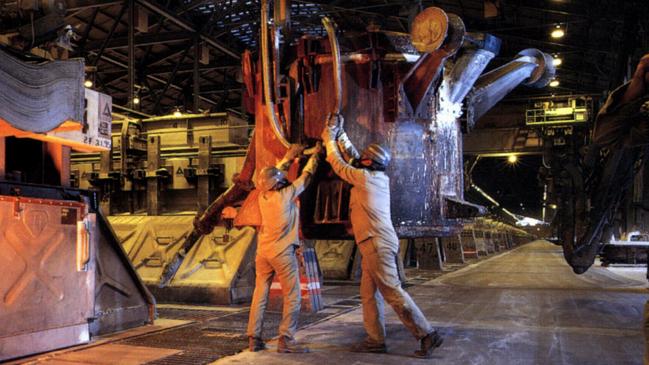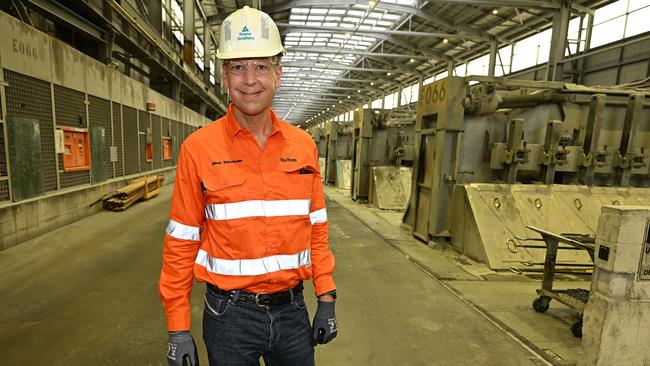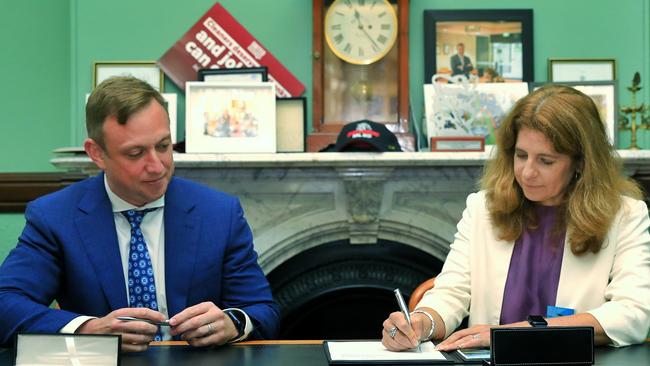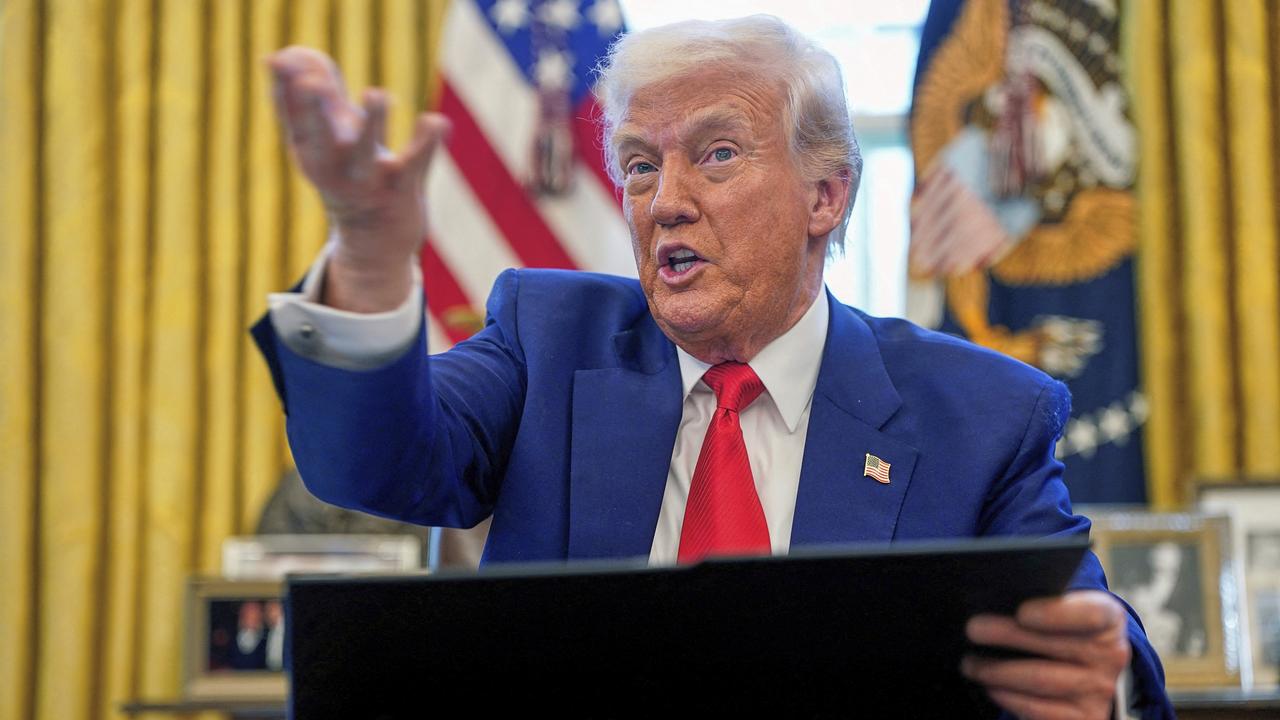Qld govt to financial help Rio Tinto keep Gladstone aluminium smelter running
For an undisclosed amount of financial support, Rio Tinto has committed to running its Boyne aluminium smelter in the industrial city of Gladstone at full capacity until 2040.

Rio Tinto says it will partner with the Queensland government to ensure the financial viability of its Boyne aluminium smelter in the industrial city of Gladstone.
The mining major on Thursday said it would work with the government to safeguard a pillar of Queensland’s industrial manufacturing base around Gladstone under a partnership to support investment in renewable energy projects.
A dollar value of the agreement has not been disclosed but relates to subsidised energy costs for the power-hungry smelter.
The agreement will include economic support from the government that will support Boyne Smelters Ltd’s financial viability from 2029 as the smelter transitions to renewable energy.
In return, Rio Tinto will invest to maintain BSL’s full operational capacity for the next 16 years.
Rio Tinto holds a 73.5 per cent stake in BSL after acquiring Mitsubishi Corporation’s 11.65 per cent interest this year.
Rio said the deal with the government would ensure BSL, which has an annual production capacity of more than 500,000 tonnes of aluminium and directly employs more than 1000 people, would continue to be a significant contributor to the economy.
Rio Tinto also will work to expand its coastal shipping capacity, to add a fifth domestically crewed vessel to its existing fleet of four.
These ships transport bauxite from the company’s Gove and Weipa mines to operations in Gladstone. Rio in January sealed a $1bn deal to buy huge amounts of solar power to drive its aluminium production in Gladstone.

Under the 25-year agreement with European Energy Australia, Rio will buy all electricity from the proposed 1.1GW1 Upper Calliope Solar Farm. Rio also has a deal to buy most of the electricity from Windlab’s planned 1.4GW Bungaban wind energy project. about 290km southwest of Gladstone.
Last year, Rio wrote off the value of its Boyne smelter, blaming high energy costs.
Rio Tinto chief executive Jakob Stausholm said the agreement with EEA was a first important step to repower its Gladstone operations and illustrated a commitment to keeping sustainably powered industry in Central Queensland.
Rio is seeking affordable long-term power for its three Gladstone production assets – the Boyne aluminium smelter, the Yarwun alumina refinery and the Queensland Alumina refinery.
Then Rio Tinto Group chief executive Jean-Sebastien Jacques warned in 2020 that Australian smelters such as Boyne were on “thin ice” due to the high electricity costs and low aluminium prices. “The ice is actually becoming slightly thinner,” he said.
Queensland Premier Steven Miles said that under the agreement, Rio Tinto would be required to operate the smelter at full capacity until the end of 2040, commit to ongoing maintenance capital expenditure and meet employment requirements.

Rio Tinto has also committed to invest in demand response capabilities, with the smelter called on to reduce its electricity demand at times of tight supply, reducing pressure on the national grid and wholesale energy prices.
Mr Miles said the government had always held long-term agreements to provide the smelter with power, and “this extends those agreements out to 2040”.
“This is a good deal for Queensland that secures one of our biggest employers, but also one of our biggest emitters,” he said. He conceded that the multinational corporation could fund the energy usage itself, but the government’s deal would help protect Queensland jobs.
The Boyne smelter has been operating since 1982 and is Australia’s second-largest aluminium smelter, manufacturing carbon anodes, aluminium production, and casting of molten metal into aluminium for export.

Rio Tinto CEO Australia Kellie Parker said the agreement with the government “represents one of the most significant partnerships in our long history of operations in the state”.
“We need another gigawatt here at the Boyne smelter, and part of the partnership ... gives us confidence that we can go after that next gigawatt to repower here,” she said.
“So it is about making the decisions now for the infrastructure build, to make sure that we’re ready for the end of the decade.
“While this is a critical part of the puzzle, we have more to do.
“We will continue to engage with the federal government on supportive industry policy to help sustain Australia’s green aluminium sector for the future.”






To join the conversation, please log in. Don't have an account? Register
Join the conversation, you are commenting as Logout